Blogs
Types of Grippers You Can Use for Manufacturing
This blog explores different gripper types, their features, applications, and how they improve production efficiency.
32 minute read
In This Article
The modern industrial landscape is rapidly evolving and robotic arms have become a defining symbol of progress. Industrial robotic arms are assisting businesses across the world to boost their productivity through enhanced speed, precision, and quality.
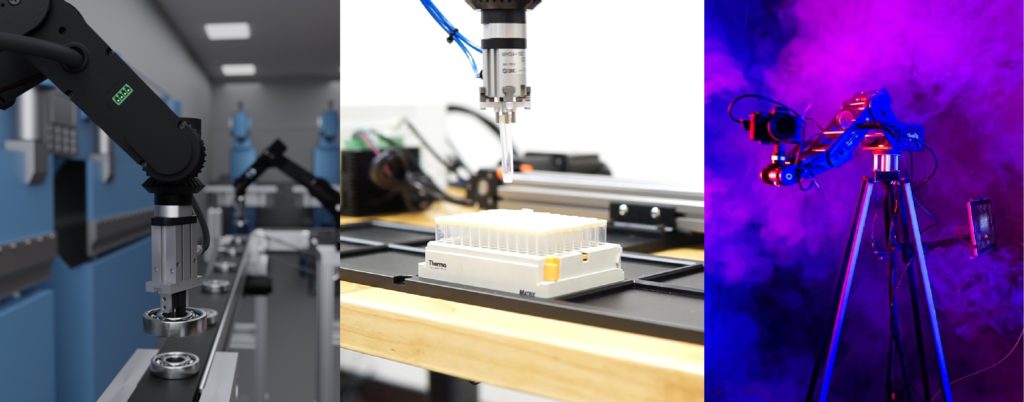
Robotic arms, also known as manipulators, are versatile mechanical limbs that are programmed to perform tasks with unparalleled speed, accuracy, and efficiency. Industries have gone from embracing automation to having it as an indispensable part of their industrial processes.
Different robotic arms, by automating deeply specific tasks, enhance the overall productivity and output of an industrial workspace. Here are some of the characteristics that make them valuable as industrial assistants:
One of the chief reasons that robotic arms are flourishing across sectors is their adaptability to different kinds of tasks across different environments. They’re designed and programmed in a way that their flexibility allows them to take on roles from intricate work to heavy lifting, all with the precision of an expert.
At the heart of these robotic wonders lie essential components, including actuators, sensors, and specialized end-effectors. Actuators provide the mechanical muscle, sensors offer feedback for precise control, and end-effectors equip them for specific tasks. This synergy of components empowers robotic arms to excel in various applications.
Robotic arms represent not just a technological breakthrough but a fundamental shift in how work, innovation, and progress are approached. They have been vital in reshaping industries across sectors like manufacturing, healthcare, space exploration, agriculture, and more.
Here are some tasks that industrial-grade robots are designed to perform with efficiency today.
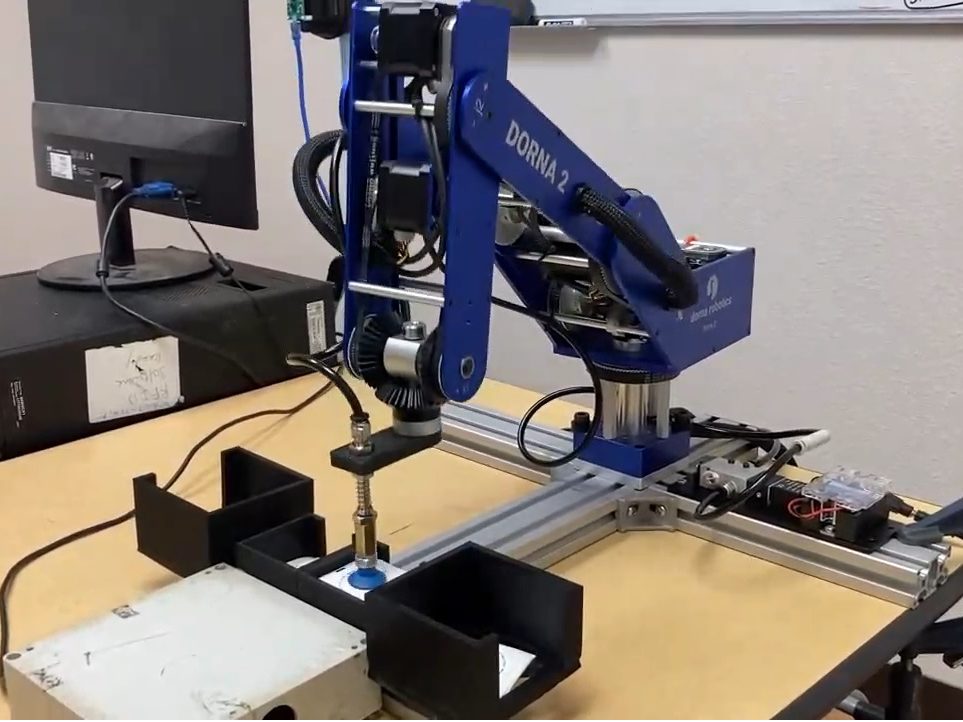
Robotic arms are transforming material handling across industries, delivering consistent results, reducing operational costs, and enhancing the overall efficiency of manufacturing processes. Their ability to adapt to various tasks makes them indispensable tools in the pursuit of excellence in manufacturing.
Sectors and industries it caters to:
Logistics And Warehousing
Robotic arms are helping in warehouses to seamlessly load and unload heavy items from conveyor belts, transport fragile products without causing damage, and stack pallets with impeccable accuracy. As a result, they reduce manual labor, enhance productivity, and minimize the risk of workplace injuries.
Automotive Sector
Robotics play a pivotal role in enhancing the assembly process. They precisely position parts for assembly, ensuring all parts align with each other. Their accuracy leads to improved product quality and ultimately benefits consumers.
Food Industry
The food industry is embracing robotic arms, too, for food handling tasks, where hygiene and precision are paramount. These robotic systems can delicately handle food products, such as pastries, chocolates, and fruits, with the utmost care, and maintain the quality of the final product.
Dorna’s cutting-edge robotic solutions are designed for performing various material handling tasks with remarkable speed, precision and efficiency. Explore their application in your industrial workspace by booking a demo for free!
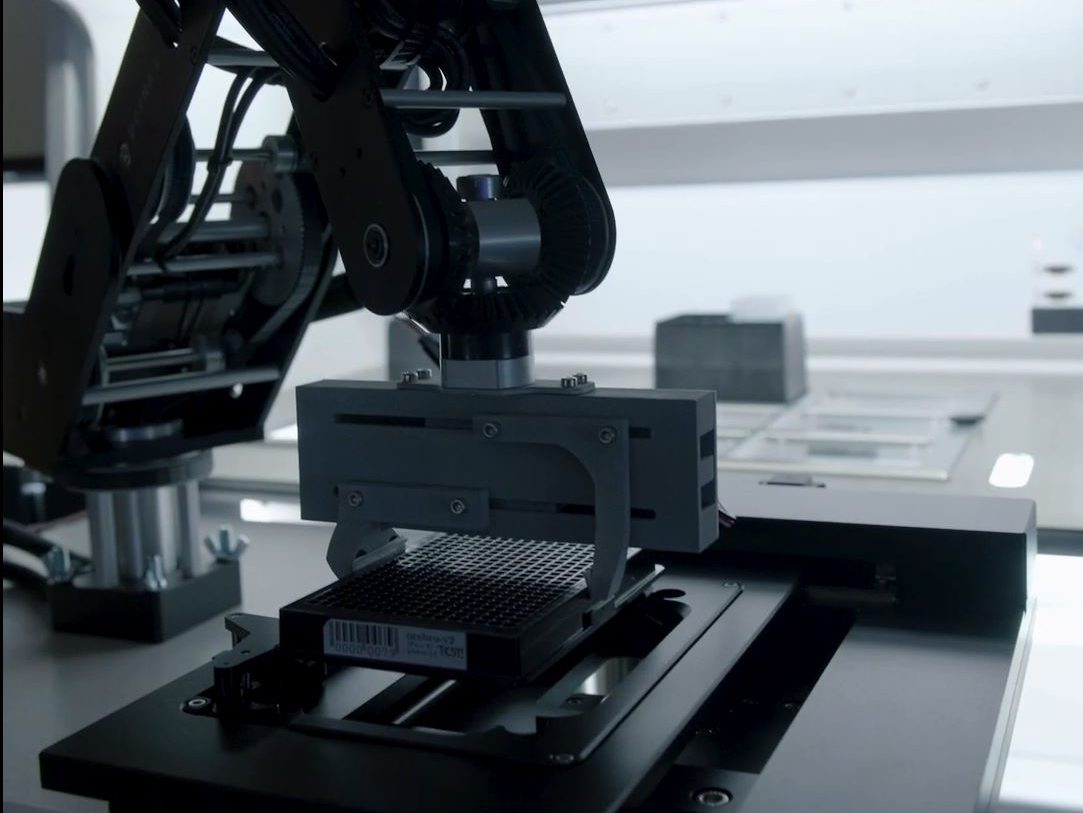
Laboratory automation has undergone a significant revolution, thanks to the integration of robotic arms into research and experimentation processes. Robotic arms play a pivotal role in enhancing efficiency, precision, and repeatability in tasks for various scientific fields, like pharmaceuticals, biotechnology, and healthcare.
Sectors and industries it caters to:
Pharmaceutical Research and Drug Development
Robotic arms are instrumental in tasks such as high-throughput screening and compound management. These tasks require a high level of precision and consistency, which robotic arms excel at, ensuring experiments yield reliable results. This not only accelerates the pace of research but also reduces human error.
Biotechnology Laboratories
Laboratories benefit from robotic arms in cell culture management, sample preparation, and DNA sequencing. These systems handle delicate biological materials with care and can carry out repetitive tasks tirelessly, allowing scientists to focus on data analysis and innovation.
Healthcare
Robotic arms are used for diagnostic testing, medication dispensing, and even surgery. In minimally invasive surgeries, for instance, robotic surgical arms provide surgeons with enhanced dexterity and precision, resulting in shorter recovery times and reduced patient trauma.
The integration of robotic arms in lab automation not only accelerates research and development but also ensures the reproducibility of results, leading to breakthroughs in science and medicine that have a direct impact on human health and well-being.
Lab automation becomes easier and more accessible than ever with Dorna, enhancing research through precise handling and easy programming. Book a demo to explore Dorna’s application in your lab.

Besides industrial and scientific applications, robotic arms are now enhancing production processes in creative fields too, like applied arts, entertainment, and culinary arts. The complete creative potential of robotic arms remains unlocked, and their integration into these diverse fields is a testament to their adaptability and transformative capabilities. They are not just tools for efficiency but also partners in pushing the boundaries of human creativity and innovation.
Sectors and industries it caters to:
Applied Arts
In the applied arts, artists and sculptors are harnessing the precision and versatility of robotic arms to create intricate sculptures and installations. These robotic artists can produce intricate designs with a level of precision that would be nearly impossible to achieve by hand. The fusion of technology and art is pushing the boundaries of creativity and redefining artistic expression.
Entertainment Industry
Robotic arms have become a staple for special effects and immersive experiences. They control camera movements for dynamic shots in movies, create lifelike animatronic characters in theme parks, and even perform stunning acrobatic feats in live shows. This integration of robotics into entertainment elevates the audience’s engagement and blurs the lines between reality and fantasy.
Culinary Arts
Robotic arms assist chefs in upscale restaurants by preparing dishes with precision and consistency. From sushi preparation to dessert decoration, these culinary robots ensure that each plate is a masterpiece, meeting the highest culinary standards.
Dorna robots have emerged as ideal creative assistants enhancing the creative production ecosystem with their innovative design, celebrated efficiency, and budget-friendly pricing. Book a demo to explore its applications!
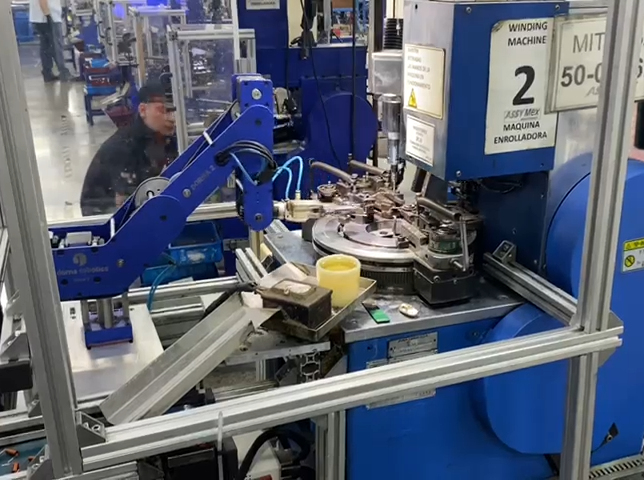
Businesses across the board have taken to robotic arms to transform manufacturing, elevate productivity, enhance product quality, and increase worker safety. Their adaptability and precision have made them essential tools for modern production lines.
Sectors and industries it caters to:
Manufacturing
In manufacturing, these versatile machines excel at tasks like product assembly, welding, and painting. They ensure every component is precisely placed and securely fastened, leading to enhanced product quality and consistency. Additionally, robotic arms are adept at handling materials that may be too heavy or hazardous for human workers, thus improving safety in manufacturing plants.
Automotive Industry
This industry, in particular, relies heavily on robotic arms for assembling complex vehicles. These robots expertly install parts, weld seams, and perform inspections with unparalleled accuracy, contributing to the production of high-quality automobiles.
Electronics Manufacturing
Robotic arms delicately handle and place small components with precision, ensuring circuit boards and devices are flawlessly assembled. This precision is crucial for maintaining the reliability of the brand’s electronic products.

By eliminating human error and offering unwavering consistency, robotic arms redefine quality control. Equipped with advanced vision systems, they meticulously inspect and control quality with unmatched precision. They’re indispensable in industries where product quality and safety are paramount, and the brand wants to maintain trust in the final products.
Sectors and industries it caters to:
Electronics Manufacturing
In electronics manufacturing, these machines scrutinize printed circuit boards (PCBs) to identify minuscule defects invisible to the human eye. Such precision guarantees reliable electronic devices.
Aerospace
Robotic arms inspect critical components like turbine blades and composite materials, ensuring aviation safety by promptly identifying and addressing imperfections.
Food Production
Robotic arms enforce stringent quality standards, meticulously inspecting products for contaminants and irregularities, safeguarding the food supply chain.
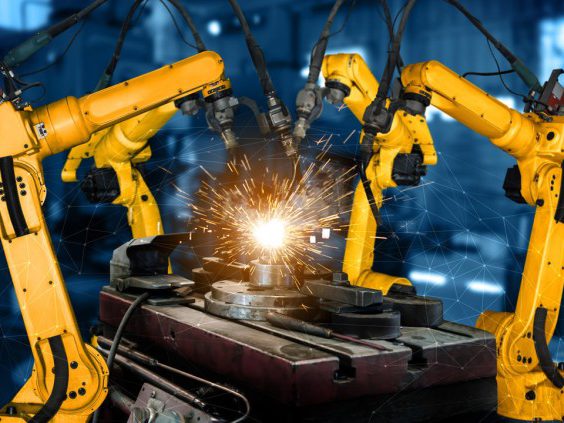
The adaptability of robotic arms to different welding and fabrication methods, coupled with their ability to operate in hazardous environments, makes robotic arms invaluable assets in industries such as automotive, aerospace, and construction. They ensure consistent quality, durability, and cost-effectiveness in metalwork processes.
Sectors and industries it caters to:
Welding
In welding, these machines excel at intricate and repetitive tasks, ensuring consistent welds with minimal imperfections. They can handle a wide range of materials, from steel to aluminum, with impeccable accuracy, resulting in stronger and more reliable joints. Robotic welding arms are also renowned for their speed, significantly reducing production cycle times. This efficiency translates to cost savings and higher throughput in manufacturing.
Fabrication
Robotic arms streamline the cutting, bending, and shaping of materials, guaranteeing precision in the creation of complex structures and components.

Robotic arms are well-suited for packaging and palletizing due to their precision, speed, and ability to handle repetitive tasks. Prominently, it is their adaptability that allows them to work with different shapes and sizes of products, making them a valuable asset in automation.
Sectors and industries it caters to:
Packaging
Robotic arms excel at the accurate placement of products into containers or boxes, optimizing space and reducing packaging material waste. Their speed ensures high throughput, meeting the demands of fast-paced production lines.
Palletizing
Palletizing, a critical step in logistics, benefits from robotic arms as they expertly stack and organize products on pallets with precision. They adapt to various product sizes and shapes, minimizing errors in loading and improving the stability of palletized goods during transport.
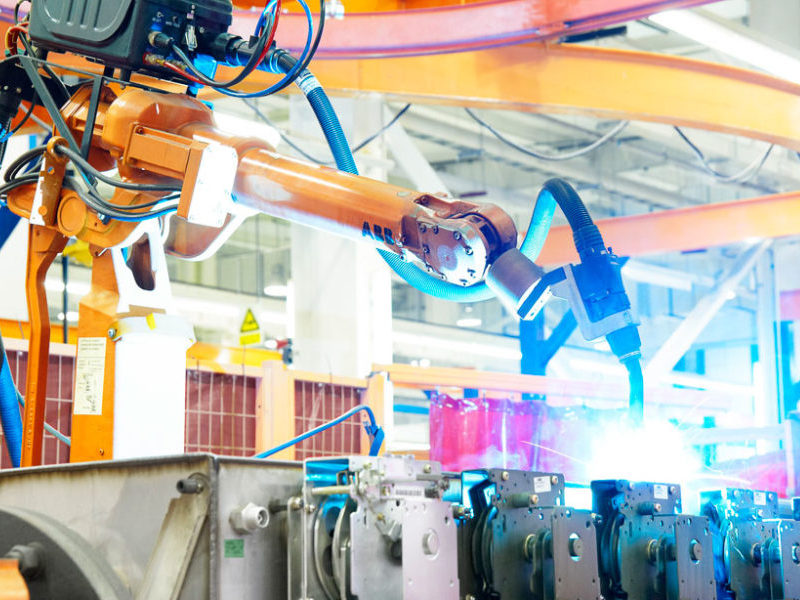
Equipped with advanced sensors and cameras, robotic arms can provide precise, real-time data, ensuring both safety and productivity in hazardous environments, such as nuclear facilities, chemical plants, and mining operations:
Sectors and industries it caters to:
Nuclear Facilities
Robotic arms handle radioactive materials, perform maintenance inside reactors, and conduct inspections, reducing the risk of human radiation exposure and enhancing safety.
Chemical Plants
Robotic arms are instrumental in managing toxic and corrosive substances, effectively minimizing the risk of chemical spills and human contact. Their precision also improves the safety and efficiency of chemical processes.
Mining Operations
Robotic arms assist in drilling, excavation, and material handling. They operate reliably in extreme conditions, bolstering operational efficiency and minimizing costly downtime.
There are several benefits of integrating robotic arms into your industrial workflow.
In a world being increasingly defined by automation and precision, robotic arms have emerged as indispensable allies in our pursuit of efficiency, accuracy, and safety. These versatile machines are reshaping industries and expanding the horizons of what is achievable.
As we stand at the cusp of a robotic revolution, it is evident that the significance of robotic arms in modern society is immeasurable. Their ability to improve productivity, enhance precision, and navigate complex environments underscores their pivotal role in shaping the future.
As a leading player in the field, Dorna brings years of expertise to the forefront of robotic arm manufacturing. Their dedication to innovation and precision has made them a go-to choice for industries seeking cutting-edge solutions.
Take the first step towards boosting your efficiency, productivity, and profitability.
Blogs
This blog explores different gripper types, their features, applications, and how they improve production efficiency.
32 minute read
Blogs
Material handling is the process of moving, controlling, and managing materials within a facility or a supply chain. It involves…
29 minute read
Blogs, Products
Robots are steadily becoming part of various industrial processes, allowing humans to sidestep monotonous, hazardous, or demanding tasks. This blog…
21 minute read
Blogs, News
In a world increasingly defined by technological innovation, the robotics and automation industry stands, today, as the ultimate symbol of…
32 minute read